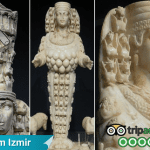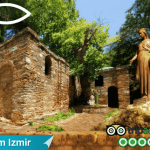The State Agora of Ephesus is the wide, smooth open area on the left side on the way from the Magnesia Gate entrance (Upper Gate of Ephesus). The measures of the State Agora are 160×56 m. On the Pion Mountain side of the State Agora lies a marble road, while on the Panayir Mountainside, you can find the Stoa Basilica, the Varius Bath, the Odeion, and the Prytaneion. The State Agora served as a semi-sacred place where political, social, and religious gatherings took place.
Table of Contents
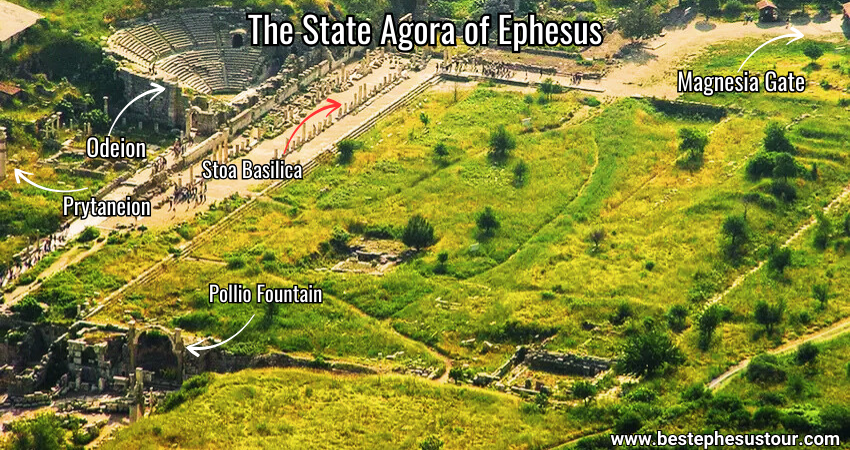
The Differences Between the State Agora And Commercial Agora
In ancient Ephesus, the State and the Commercial Agora had very different roles, each essential to the city’s functioning. The State Agora was primarily a place for political, religious, social, and governance gatherings. It was where officials held meetings, made important decisions, and engaged with the public. On the other hand, the Commercial Agora was focused on trade and commerce, situated closer to the harbor of Ephesus where goods were exchanged and merchants gathered. This marketplace was a lively area, filled with merchants and customers.
The Temple in the Agora of Ephesus
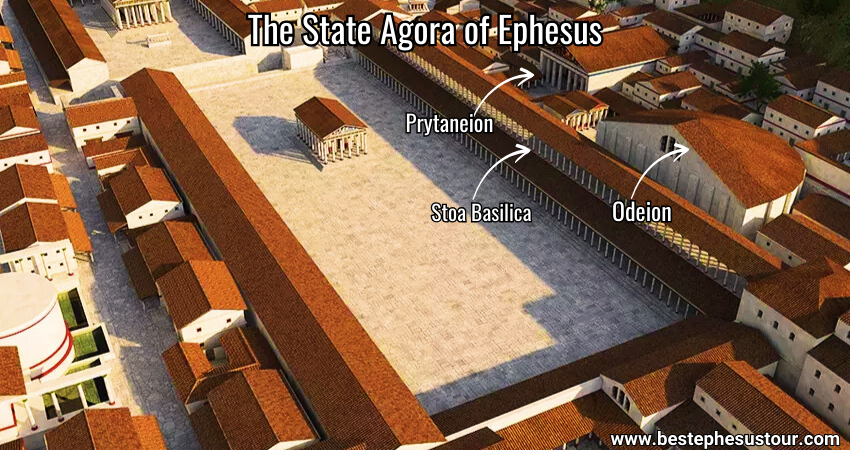
There was a square-shaped temple in the middle of the state agora of Ephesus like many agoras. The temple suffered significant damage, and its construction materials were repurposed for the restoration of other structures in Ephesus.
Possible Identification of the Temple
When places having to do with water were found around it, it was firstly suggested that this might have been the Isis Temple but then it was supposed to be the Augustus Temple. The group of statues explaining Odysseus’s adventures with Polyphemos, which were found on the pediment of the Temple, were later put beside the round planned Pollio fountain.
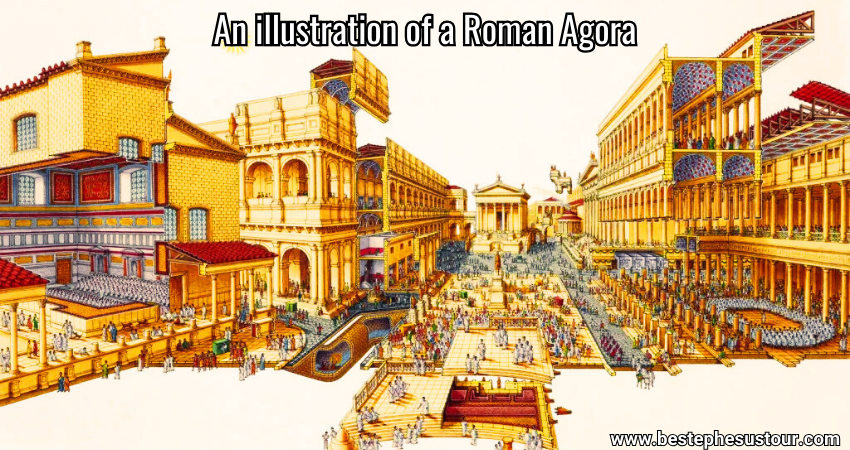
Construction of the Temple and Agora
The Temple was constructed together with the Agora in the 1st century B.C. Excavations at the State Agora revealed the remains of an earlier structure located 1.5 to 2 meters under the current one.
A 3-meter excavation uncovered remains of a road surrounding Panayir Mountain, dating back to the 6th century B.C., along with earthen tombs known as the Clazomenae type. One of the tombs is exhibited at the Tomb Remnants Hall of the Ephesus Archaeology Museum.
Final Shape of the State Agora of Ephesus
The State Agora took its final form during the period of Emperor Theodosius (379-395 A.D.). On its north and east were two stoas which have remained until today.




